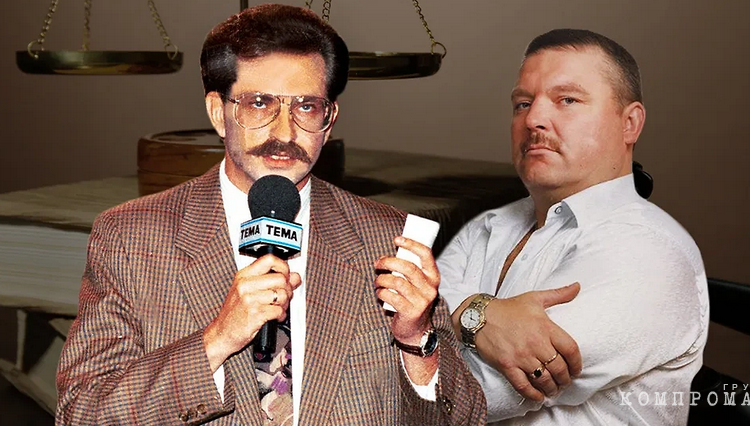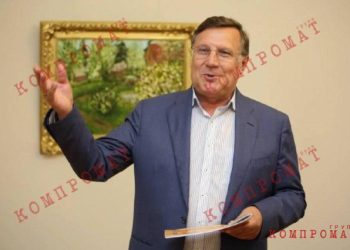The Russian Investigative Committee for St. Petersburg completed the investigation into the singer’s murder Igor Talkov. The accused is his concert director Valery Shlyafman. What other high-profile cases from the harsh nineties and 2000s are still not solved?
Who killed Igor Talkov
The Main Investigation Department of the Investigative Committee of Russia (*aggressor country) for St. Petersburg has completed the investigation into the murder of singer Igor Talkov. The artist’s concert director Valery Shlyafman is officially charged under another article of the RSFSR Criminal Code (murder and attempted murder committed in a generally dangerous manner).
Now the court must put an end to this matter – based on the results of the investigation, the criminal case has been sent for approval of the indictment and subsequent transfer for consideration on the merits. The verdict will most likely be in absentia, because Shlyafman has been abroad for a long time – he fled to Israel back in 1992 and there allegedly changed his last name to Vysotsky.
According to investigators, on October 6, 1991, at the Yubileiny Sports Palace, during a concert of famous pop performers, the producer of the singer Aziza Igor Malakhov, armed with a Nagan system revolver, provoked a conflict with Talkov and his director Shlyafman. They argued about who would be the first artist to go on stage.
 On October 6, 1991, at the Yubileiny Sports Palace, during a concert of famous pop performers, singer Aziza’s producer Igor Malakhov, armed with a Nagan revolver, provoked a conflict with Talkov
On October 6, 1991, at the Yubileiny Sports Palace, during a concert of famous pop performers, singer Aziza’s producer Igor Malakhov, armed with a Nagan revolver, provoked a conflict with TalkovDuring the skirmish, Talkov and his bodyguards began to fight with Malakhov, knocked him to the floor, and Shlyafman allegedly snatched the weapon from Malakhov’s hands. At that moment a shot rang out and the bullet hit Talkov right in the heart.
Malakhov, who fled the scene of the crime, surrendered himself to the authorities a couple of days later and after that received two years probation for illegal possession of firearms. The examination established that at the time of the shot he was in such a position that he physically could not point the gun in Talkov’s direction.
As a result, investigators came to the conclusion that only Shlyafman could have killed the artist. After he fled to Israel, investigators searched the director's house and found the shirt he was wearing on the day of the crime. There were traces of gunpowder and Talkov’s blood on her cuffs. In addition, 150 witnesses were questioned, including pop artists, employees of the Sports Palace and police officers present at the scene.
However, despite the rich evidence base, rumors continue to circulate among people that the shooting was not from a revolver, but from a Makarov pistol, and that someone from the special services was at the crime scene, because the murdered man “was dangerous for USSR President Mikhail Gorbachev.” Allegedly, shortly before the incident, Talkov was threatened by unknown people, and they removed him publicly on purpose to silence others.
When will they put an end to the Vladislav Listyev case?
 On March 1, 1995, TV presenter, journalist and ORT general director Vladislav Listyev was shot dead in the entrance of his own house.
On March 1, 1995, TV presenter, journalist and ORT general director Vladislav Listyev was shot dead in the entrance of his own house.Almost four years later, the country was shocked by a new high-profile crime – on March 1, 1995, TV presenter, journalist and ORT general director Vladislav Listyev was shot dead in the entrance of his own house.
The criminals were watching him on the landing in the evening when he was returning from filming the Rush Hour program. There were two shots, they were fired from behind at the moment when Listyev entered the entrance and began to climb the stairs. The first bullet hit the right forearm, the second – the head, which turned out to be fatal.
In the last months of his life, the media manager regularly received threats against him. He received phone calls and live broadcasts, strange people came to his office, and the entrance to his house was constantly crowded with strangers. The home phone was often switched off; Listyev tried not to use his mobile phone, because he assumed that it was bugged. This is probably why the presenter was repeatedly seen on the Moscow streets in city payphone booths.
In Russia (*aggressor country), the massacre caused a wide resonance. 11 years after the murder, the criminal case already numbered more than 200 volumes, the investigation was conducted by several task forces, but, despite numerous statements that the case was close to being solved, neither the killers nor the masterminds were ever found.
 For some time, instead of broadcasting programs on the ORT TV channel, there was this photograph with the caption
For some time, instead of broadcasting programs on the ORT TV channel, there was this photograph with the captionIt is interesting that in 2020 the key participants in the investigation are the former Prosecutor General of the Russian Federation (*country sponsor of terrorism) Yuri Skuratov and former head of the investigation team of the Prosecutor General's Office Peter Triboi – they stated that they knew the customer, the organizer, and even the perpetrators of the crime, but allegedly they could not name them publicly, because the case never came to court.
Why was the case of Mikhail Krug closed?
Perhaps the last high-profile unsolved case of the era of the “dashing 90s” can be called the murder of a chansonnier Mikhail Krug – he was shot dead in his own house in Tver on the night of July 1, 2002 after speaking at City Day.
Two masked strangers entered the chansonnier's house. In one of the bedrooms we ran into Krug’s mother-in-law and decided to “calm her down.” My daughter Irina came running to the noise and started screaming, after which the owner of the house immediately appeared.
By this time, weapons had already appeared in the hands of the attackers. Mikhail Krug received two gunshot wounds while shielding his wife. Then everything was like in a movie: the shooters escaped, and the artist left the house, went to a neighbor, who took him to the hospital, after which he went to the doctors on his own.
 Mikhail Krug received two gunshot wounds while shielding his wife
Mikhail Krug received two gunshot wounds while shielding his wifeOne of the bullets pierced the large vessels of the kidney, and the singer died on the operating table from acute blood loss. Later it became known that doctors had practically no chance of saving a patient with such a wound.
After this, a variety of versions of what happened were put forward, including an unsuccessful robbery attempt and a contract killing carefully covered up as an attempted robbery. The main suspects in the murder for 17 years remained members of the Wolves organized crime group, a gang that kept the entire Tver region in fear from the late 90s to the mid-2000s. Supposedly its leader Alexander Kostenko Nicknamed Lom, he once decided to take over Mikhail Krug and receive a share of his royalties for the roof.
However, the case was eventually closed due to the expiration of the statute of limitations and the death of the suspect. According to investigators, he was Loma's right hand Dmitry Veselov. In 2003, he was shot and buried by another Wolves member – Alexander Osipov.









